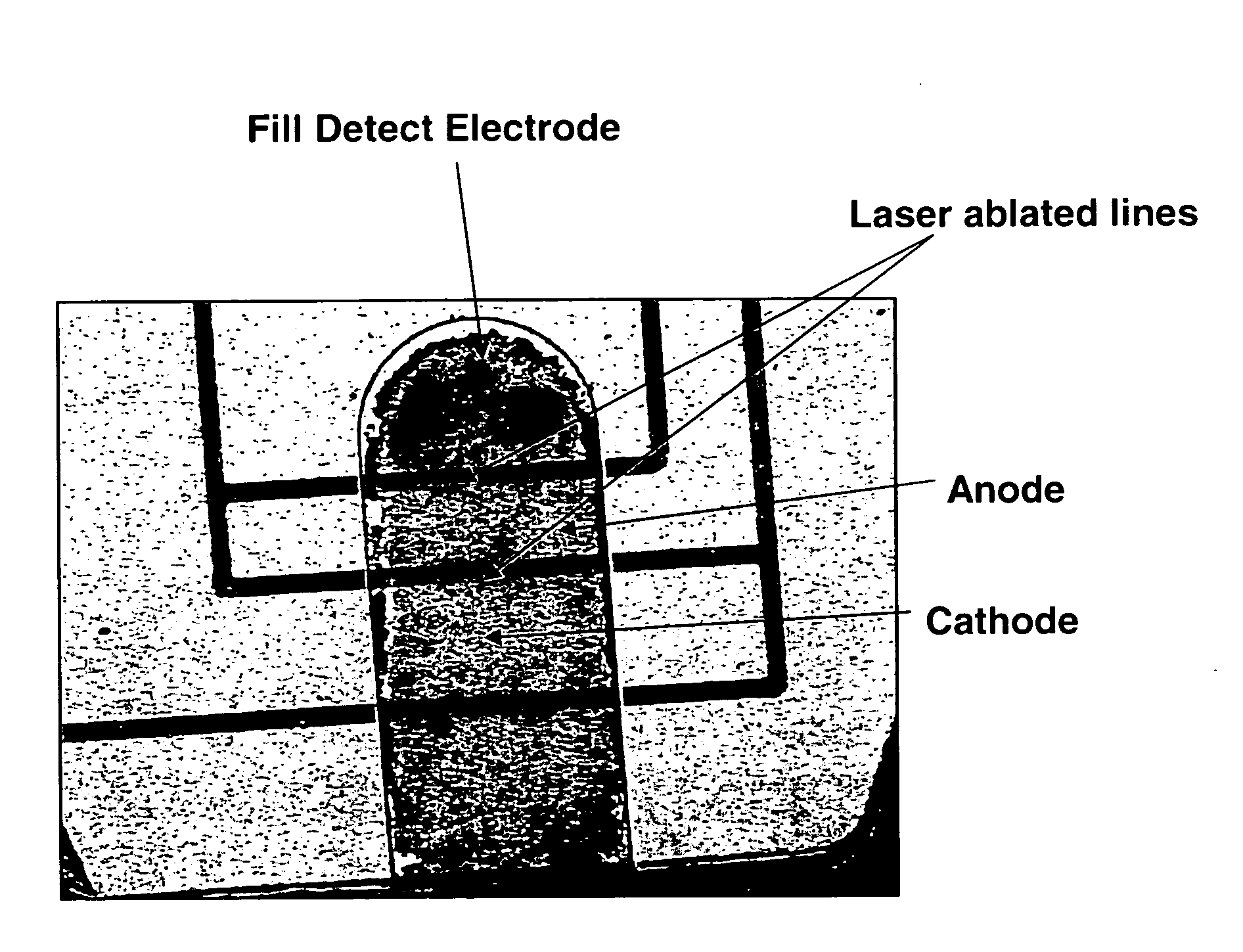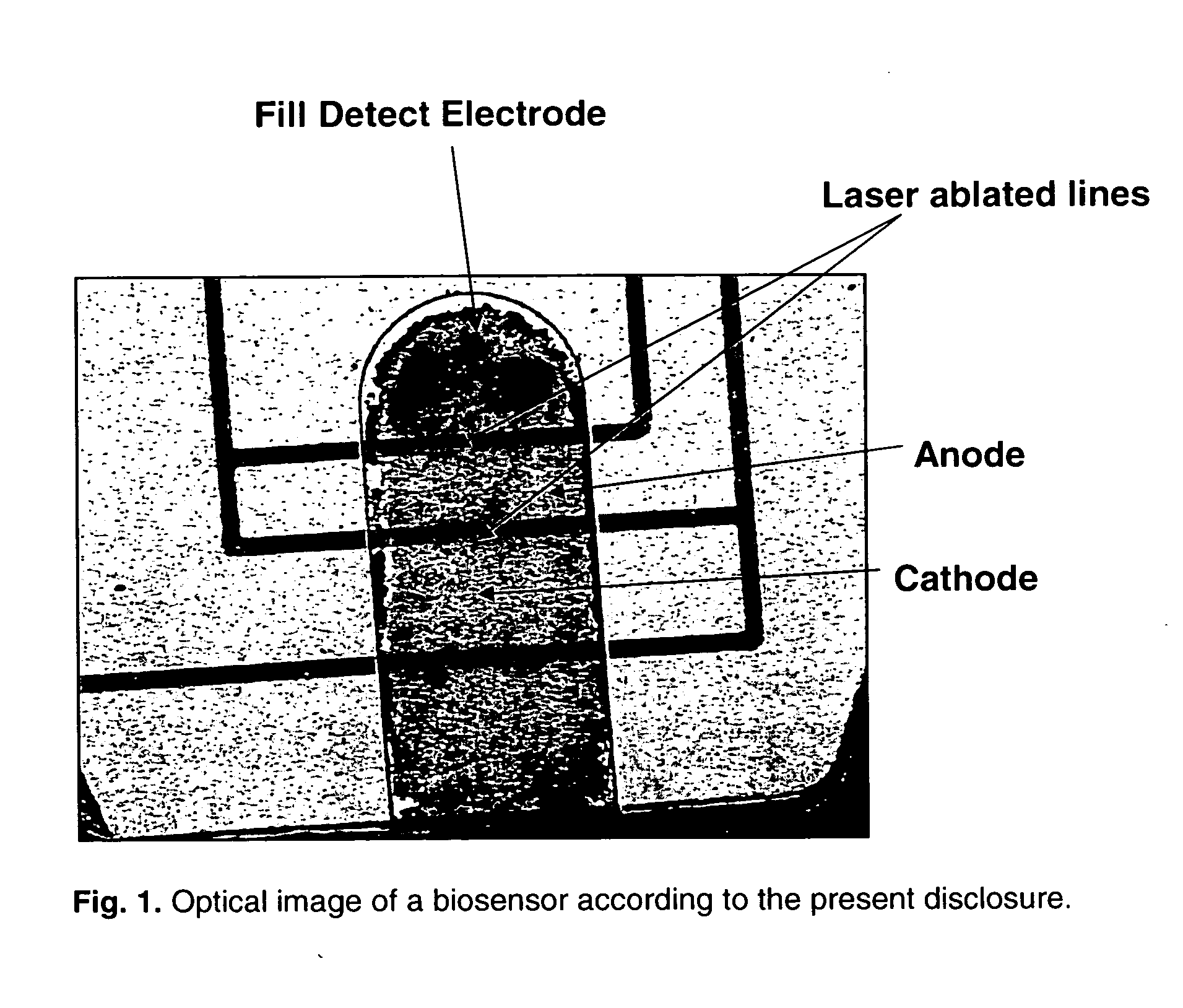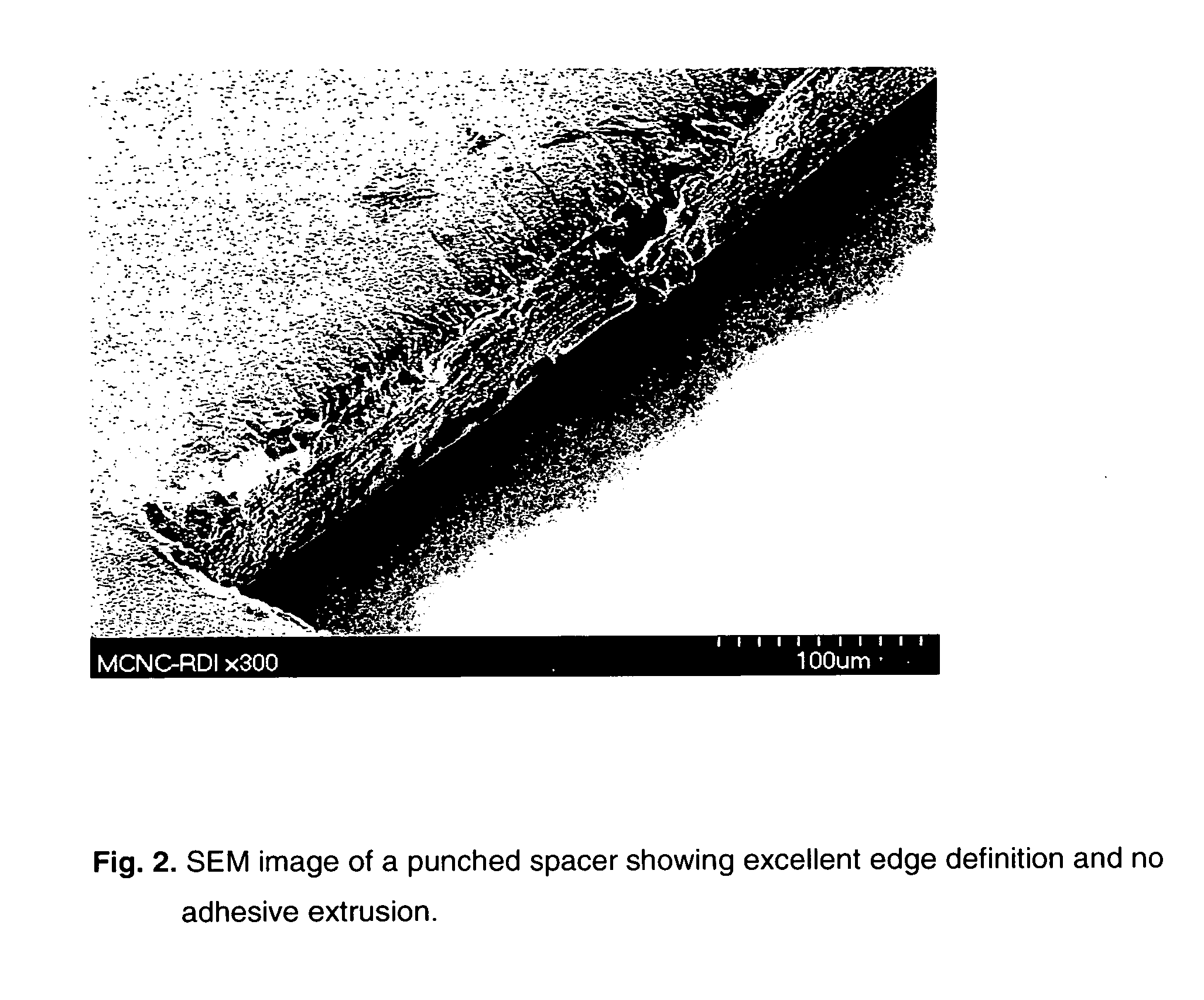Biosensors comprising heat sealable spacer materials
a technology of heat sealing spacers and biosensors, applied in the field of biosensors, can solve the problems of difficult to obtain electrode patterns with small resolution and smooth edges, and achieve the effect of excellent edge quality
- Summary
- Abstract
- Description
- Claims
- Application Information
AI Technical Summary
Benefits of technology
Problems solved by technology
Method used
Image
Examples
example 1
[0082] A thin film of gold (30 nm) was sputtered onto a plastic film substrate (PET). The gold layer was then laser ablated using a focused beam approach, in which Galvo mirrors were used to direct the laser beam to ablate the material according to a desired electrode pattern. The remaining gold layer was formed into desired patterns for an electrode array, which included an anode, cathode, and two fill detect electrodes.
[0083] Next, the second layer or spacer layer of the biosensor was formed by first punching out sample cavities in a polyester film having a heat seal coating. The polyester film used for the spacer was a commercially available PET film (3M Scotchpak™ MA370M), which had a total thickness of 3.7 mils, including the heat seal coating of 0.8 mils.
[0084] The punched spacer material was laminated onto laser ablated electrode substrate to form assembled biosensors having an anode, cathode and two fill detect electrodes. As shown in FIG. 1, the anode area was defined on ...
example 2
[0087] Once the sensors were assembled according to Example 1, chemistry was dispensed into the sample cavities using micropipetting. Blood volume required to fill the sample cavity of this biosensor was 0.25 ul when a 100 μm thick spacer layer was used. Table 1 below shows the relative percentages by weight of the various ingredients dispensed into the sample cavities.
TABLE 1IngredientWeight PercentPhosphate, Monobasic (Buffer) 0.64%Phosphate, Dibasic (Buffer) 0.92%Silwet L-7206 (Spreading Agent)0.051%Triton-X 100 (Spreading Agent)0.051%Methocel F4M (Binder)20.00%Sucrose (Enzyme Stabilizer) 5.00%Hexammine Ruthenium (III) Chloride (Mediator) 5.88%PQQ Dependent Glucose Dehydrogenase (Enzyme)10.00%18 mega ohm deionized waterBalance
[0088] The chemistry solution was then dried and a cover was applied over the sample cavities to form capillary gaps into which blood sample could be drawn. Blood testing data was taken on the finished samples, with sample sizes ranging from 40-60 per bloo...
PUM
| Property | Measurement | Unit |
|---|---|---|
| Temperature | aaaaa | aaaaa |
| Temperature | aaaaa | aaaaa |
| Fraction | aaaaa | aaaaa |
Abstract
Description
Claims
Application Information
 Login to View More
Login to View More - R&D
- Intellectual Property
- Life Sciences
- Materials
- Tech Scout
- Unparalleled Data Quality
- Higher Quality Content
- 60% Fewer Hallucinations
Browse by: Latest US Patents, China's latest patents, Technical Efficacy Thesaurus, Application Domain, Technology Topic, Popular Technical Reports.
© 2025 PatSnap. All rights reserved.Legal|Privacy policy|Modern Slavery Act Transparency Statement|Sitemap|About US| Contact US: help@patsnap.com



